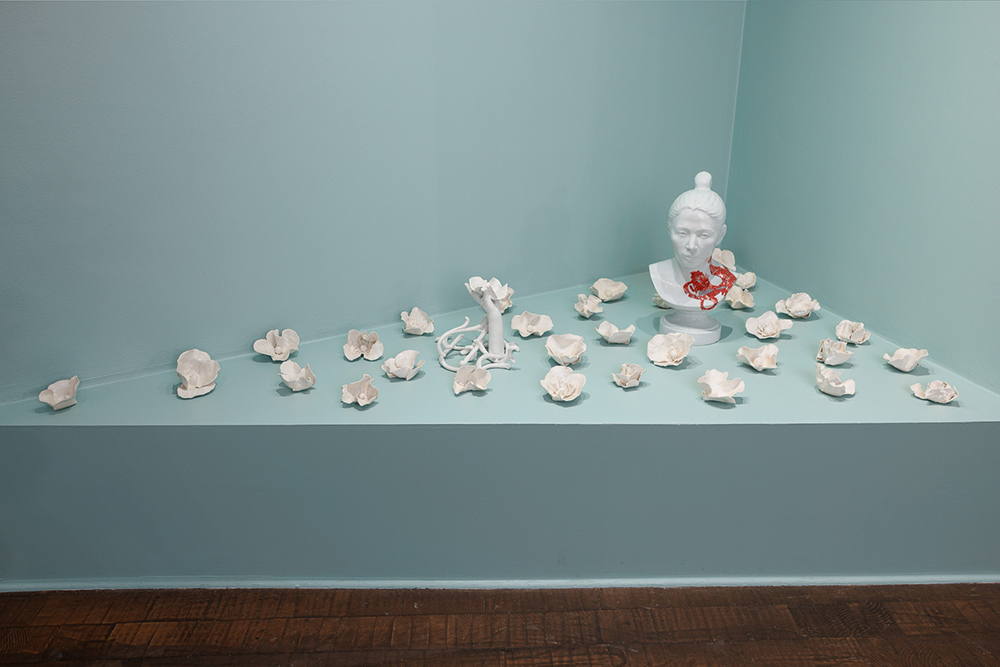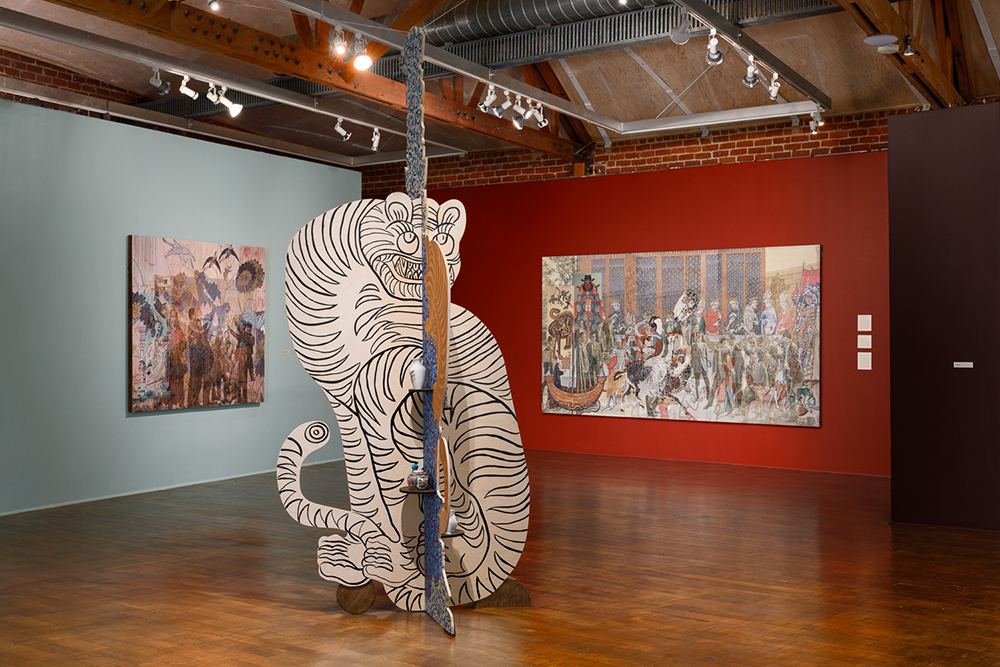In The Head in the Tiger’s Mouth (2021), the first composition in Kyungmi Shin’s kaleidoscopic exhibition, my eyes immediately landed on the luminous collection of swirls and stripes suggesting the calligraphic form of a tiger before catching on the colorful tableau in the painting’s background: a man holding up an instrument, a woman swathed in red, a young boy in blue. As the figures disappeared into the surrounding milieu of bamboo and pine trees, my eyes slipped toward the intricate slate-gray pattern overlay. Above—or amidst—that, float the shimmering silhouettes of a husband, wife and their two children, borrowed from an old photograph of the artist’s family. Poised between ghosts from the ancient past and outlines of a burgeoning generation yet to come, they are of this world and beyond it.
The seven photo-collage paintings in “Kyungmi Shin: Origin Stories” at Craft Contemporary demand extended looking, and in exchange provide the delight of ongoing discovery. Vintage family photographs, archival images, art-historical motifs and acrylic paint coalesce in portraits striving to convey the complexity of identity and the discordant narratives that form and deform history. Shin locates the point where the personal and the universal meet: where the urgency of the present intersects with the languid grandeur of the past. Within her frames, ancient shaman deities, Italian revival furniture and François Boucher pastorals coexist. While her multivalent references deftly evince the effects of colonization and cultural dissemination, they also realize a sort of magical thinking—a world where one influence doesn’t subjugate or eradicate the rest.

Kyungmi Shin, Chinoiserie objects, 2019-2024. Courtesy of the artist and Craft Contemporary, Los Angeles.
Shin’s own variegated narrative began in South Korea, where her father was a Christian minister (Christianity itself a colonial import to Korea in the late 1800s) until the family immigrated to the United States when she was 19. It would take Shin more than 10 years to understand herself as a Korean American and to grapple with what that meant. Her prismatic paintings account for this reckoning, though they don’t suggest a new assimilated identity so much as expose its many antecedents, valences and inconsistencies. They are both unified portraits and the sum of their distinct parts, recalling Édouard Glissant’s assertion that “we know ourselves as part and as crowd … our boats are open, and we sail them for everyone.”
The largest work in the show, Careful you don’t hurt somebody with all that flash (2024), inspired by both European “grand style” historical paintings and monumental Buddhist devotional sculpture, envisions an epic meeting between a Holy Roman Emperor and fellow embattled crusaders, a dragon-riding spirit from Korean folklore, and a crowd of Korean men in suits and ties. By contrast, the show’s most intimate, tender work, Three Magi (2022), transposes a drawing of her mother and baby sister over a 15th-century painting of the Three Wise Men bearing gifts for the newborn Christ Child, wherein one offering is a chinoiserie cup of gold coins. Again, I felt pulled between the radiant Virgin Mary, the Chaekgeori-inspired flower arrangement, and the metallic millefleur background. But I returned again and again to the artist’s mother’s face, a gentle reminder that we, all of us, are born of the same source.


